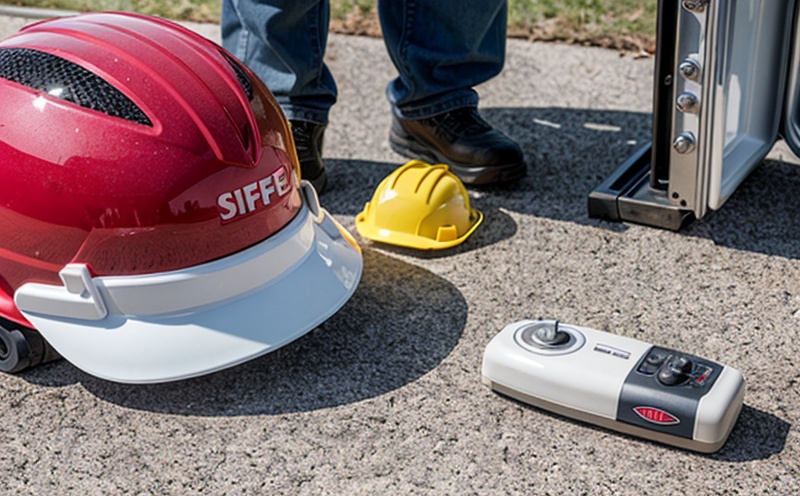ISO 18819 Lifeboat Stability Testing under Load
The International Standard ISO 18819:2006 provides a comprehensive framework for the testing and certification of lifeboats, focusing on their stability when subjected to various loads. This service ensures that lifeboats comply with stringent safety requirements set forth by international maritime organizations.
Lifeboats are critical components in marine safety systems. They must be capable of maintaining stability under extreme conditions such as heavy seas, waves, and wind. ISO 18819 defines the procedures for simulating these conditions to assess the lifeboat's performance. This testing ensures that the vessel can remain stable even when fully loaded with crew and equipment.
The test involves placing a specified load on the lifeboat while it is in water, typically using sandbags or similar weights. The stability is measured by monitoring various parameters such as roll angles, heeling moments, and drift behavior. Compliance with ISO 18819 ensures that lifeboats are reliable and safe for use in harsh marine environments.
This service is crucial for ensuring the safety of crew members and passengers on board ships and vessels. Compliance with this standard helps to prevent accidents and casualties by verifying that lifeboats can withstand challenging conditions during evacuation or rescue operations.
For quality managers, compliance officers, R&D engineers, and procurement professionals involved in marine projects, this testing is essential for meeting regulatory requirements and ensuring product quality. The test results provide critical data on the lifeboat's performance under load, which is vital for ongoing improvements and safety certifications.
Why It Matters
Lifeboats are not just vessels; they are lifelines in times of crisis. Ensuring their stability during evacuation or rescue operations is paramount to maritime safety. ISO 18819 Lifeboat Stability Testing under Load plays a vital role in verifying that lifeboats can withstand the most severe conditions, thereby enhancing crew and passenger safety.
- Reduces the risk of accidents and fatalities during evacuation or rescue operations
- Maintains compliance with international maritime regulations
- Safeguards against potential legal liabilities and penalties
- Boosts public confidence in marine safety systems
International Acceptance and Recognition
The ISO 18819 standard has been widely accepted by maritime organizations, regulatory bodies, and manufacturers worldwide. Compliance with this standard is mandatory for lifeboats intended for use in international waters.
- American Bureau of Shipping (ABS)
- National Shipbuilding and Ship Repairing Authorities
- European Union Maritime Safety Agency
- International Maritime Organization (IMO)
Use Cases and Application Examples
This testing is applicable to various types of lifeboats, including rescue boats, survival craft, and emergency evacuation vessels. The test setup involves a water tank facility that simulates real-world conditions.
| Test Case | Conditions Simulated | Expected Outcome |
|---|---|---|
| Full Load Test | Lifeboat fully loaded with crew and equipment, subjected to maximum sea conditions. | Lifeboat maintains stability within acceptable limits. |
| Emergency Evacuation Test | Simulates an emergency evacuation scenario where lifeboat is partially loaded. | Evaluates the boat's performance in real-world evacuation conditions. |





